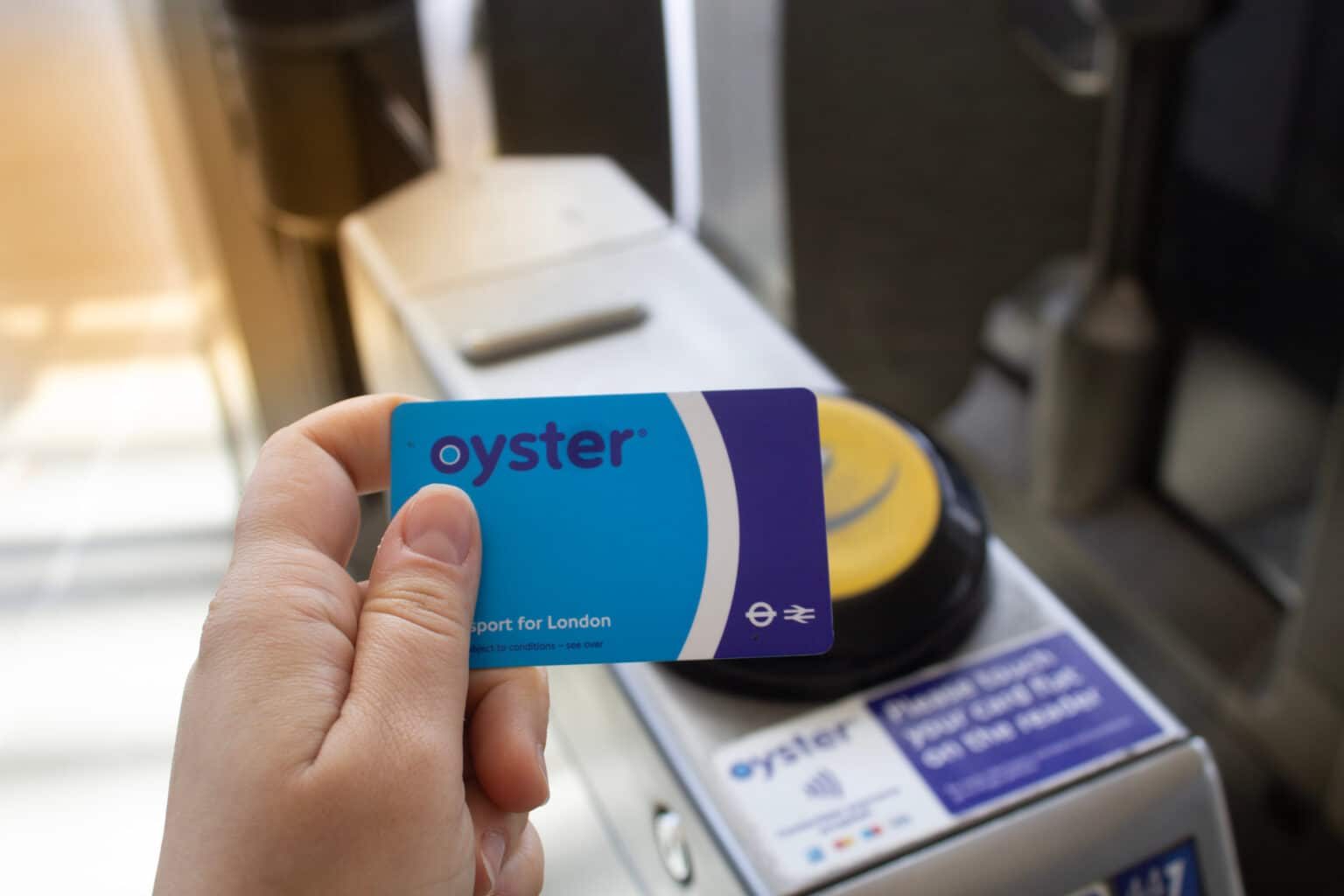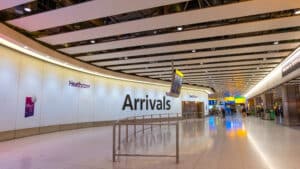Whether you’re a seasoned traveller or simply visiting London for the first time, chances are you’re going to find an Oyster card quite helpful. This nifty little card helps you efficiently get in, out, and around London. I’d even go as far as to consider it essential for anyone visiting the city.
In this article, we’ll explore more about the Oyster card plus how to acquire one — so keep reading!
Table of Contents
What’s an Oyster card?
The Oyster card is a physical smart card used to pay for public transport in London. The card is issued by Transport for London (TfL) who also happens to be the official caretaker of London’s public transport system.
Oyster cards are one of the preferred payment methods when it comes to public transport in the city — and for good reason. It’s effortless to use, and I’ve personally never had any issues with it. Characterized by its iconic blue design, the Oyster card remains a solid choice for anyone travelling within London.
How to use an Oyster card
So, how do you use an Oyster card? It’s relatively straightforward.
Each method of transportation has a yellow or orange card reader at the entrance. You tap in once on buses and on trams to pay for your entire trip until you get off. All other services (i.e. the Tube, Elizabeth line, DLR, Riverboat Services etc.) employ a slightly different method. When entering a station, you must tap in, embark on your journey, and tap out when leaving your destination. This is done to ensure you are charged the correct rate for your trip.
The slight variation might sound a bit puzzling but don’t worry. Once you’ve completed a few trips, it’ll quickly become second nature.
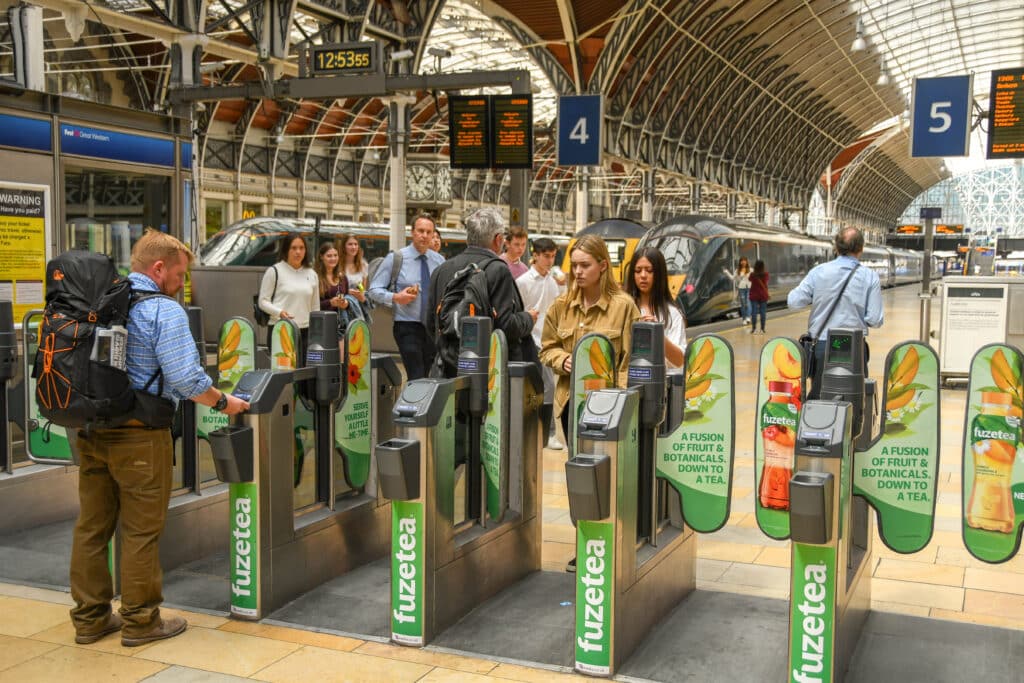
Which type of card should you choose?
You can choose between two types of Oyster cards. Knowing the difference can be useful when trying to plan your journey. So with Oyster cards, you pay as you go. This means you only pay for the trips you make — instead of paying a flat rate for unlimited trips.
Please be aware there are multiple ways to pay for public transport in London. The Oyster card is just one of them. TfL also accepts payment types such as contactless, mobile payments, physical paper tickets and Travelcards. With that said, let’s explore the two options for Oyster cards more in-depth.
Visitor Oyster card
The Visitor Oyster card is only available for purchase before you arrive in London. You order the card online, and it’s then delivered to your home, preloaded with a certain amount of pay as you go credit used to pay for transport in the city.
Apart from being a great value, the card saves you from queuing for a machine to get a regular Oyster card or a ticket. Although the waiting usually isn’t a huge problem, it’s worth considering if you want to avoid the potential hassle. Sometimes it’s nice to just breeze through the practicalities and get straight to the action!
If you run out of credits on your Visitor Oyster card, you can easily top up at a nearby Oyster Ticket Stop. There are more than 4,000 of them around London, so it shouldn’t be a problem finding one. I can also highly recommend just going to the nearest Tube, Overground or DLR station for top ups — it’s often quicker and more convenient. Typically, you’d be using one of said means of transportation right after topping up anyway.
Oyster card
The regular Oyster card is based on the same pay as you go system. However, the card itself is usually bought in a physical store or at a physical machine somewhere in London and can’t be purchased online. More on that later.
You pay £5 for the card itself and then add pay as you go credit to fund your trips continually. As mentioned earlier, you can easily top up an Oyster card at a nearby Oyster Ticket Stop. However, I usually do my top ups at Tube, Overground or DLR stations instead. Sometimes even at a National Rail station. I tend to find myself at those places more often — but this is subjective, of course. All options are perfectly viable, and you should do what works best for you.
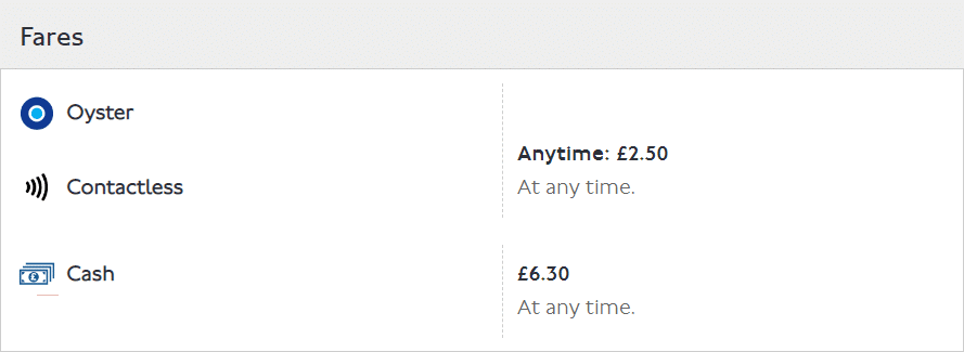
Finally, it’s important to note that the Oyster card is one of the cheapest ways to get around London. I used the Single fare finder by TfL in the above illustration to calculate the cost of an imaginary one-way trip from Blackfriars to Piccadilly Circus. The numbers speak for themselves. However, do note that the fares vary by means of transportation and zones travelled.
You should try out the tool yourself! It’s remarkably uncomplicated to use and gives you a good understanding of the fare system enforced by TfL.
How do you get an Oyster card?
Now that you know what an Oyster card is and can distinguish between the two versions, how do you get one? Well, this depends on which version you’re going for.
Where to get a Visitor Oyster card
As you recall, the Visitor Oyster card is only available for purchase before arriving in London. Hence, you’re forced to buy one via the Internet in advance of your trip. I’d recommend buying this type of card from either one of the two original providers:
- TfL Visitor Shop
- VisitBritain Shop (available in multiple currencies and languages)
You can also order the card from a list of certified agencies, yet, I have no experience acquiring one this way. I see no reason not to rely on sources you know work — although perhaps you can pick up a better deal at an agency. You’re going to have to do your research on that one!
Where to get an Oyster card
Acquiring this kind of card is more straightforward, especially if you’re already in the city. You can pick up the regular Oyster card from any of the following sources:
- Most Tube, Overground and Elizabeth line stations
- Visitor Centres (i.e. at Heathrow, King’s Cross, Liverpool Street, Piccadilly Circus or Victoria)
- Any of the more than 4,000 local Oyster Ticket Stops throughout London
- Online from TfL (only if you live in the UK)
As you can see, there are many ways to get a regular Oyster card. I would say that acquiring one at a Tube station seems to be the most intuitive way. But any method is perfectly feasible, and you should have no trouble obtaining one from e.g. a Visitor Centre.
Please note that ordering a regular Oyster card online requires you to be situated in the UK. So, if you’re travelling from abroad, this isn’t an option.
Alternatives to consider
Throughout this article, I have primarily focused on the Oyster card. That isn’t to say that it’s your only option, though. The public transport system in London is quite flexible in terms of payment methods, and TfL has done a good job of integrating modern technology into its infrastructure.
Here are some relevant mentions of alternatives you might consider.
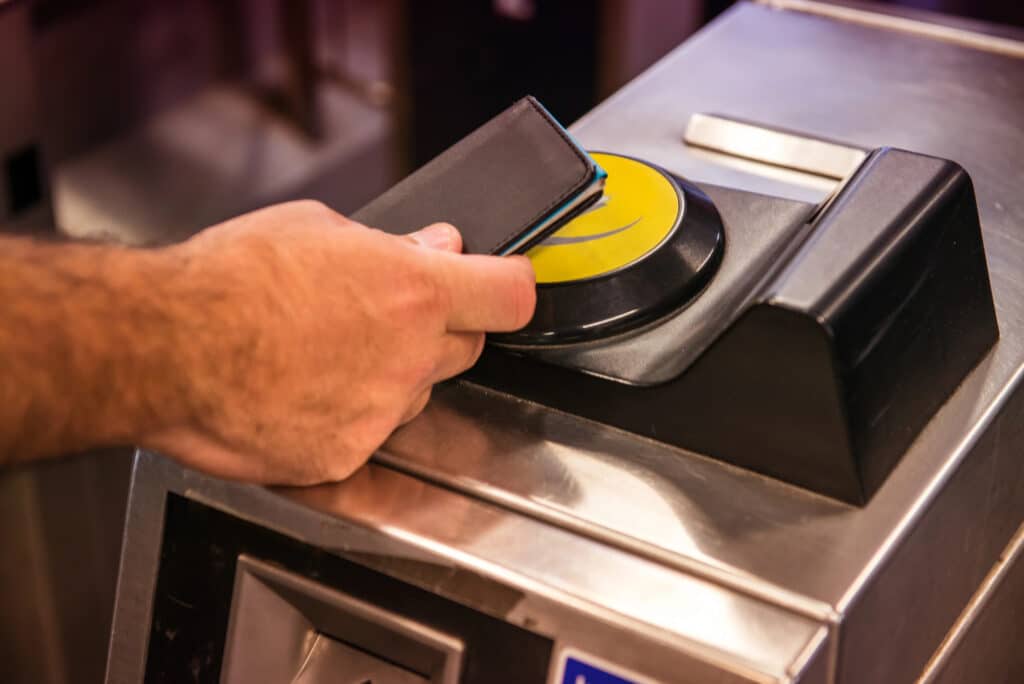
Contactless
If you have a contactless card — which most of us have these days — you can likely use that card to pay as you go on public transport in London! To those in doubt, the tapping system works the same — you merely use your contactless card instead of e.g. an Oyster card to tap with.
Now for the bad news…
While compatibility with various debit and credit card providers seems to have improved over the years, you should be aware that some contactless cards may not be accepted. All cards issued by UK banks function fine, but TfL isn’t very evident in terms of foreign cards. So, prepare for potential issues if you’re travelling from abroad!
You should also watch out for unwanted transaction fees if you’re using a non-UK bank card. Some banks might charge conversion fees since you’re paying in pounds sterling, which has to be converted to your home currency. I recommend checking directly with your card provider for further information on this.
Mobile payments
This is pretty much the same as using a contactless card.
The only difference is the device itself, meaning you can use phones, smartwatches, wristbands etc. to pay. If, for instance, you’re using an iPhone, you would then use Apple Pay to facilitate transactions. Pretty neat, right? You wouldn’t be the only one to think so. A new analysis conducted by TfL in 2022 shows that pay as you go with mobile is now more popular than ever on the Tube.
I like the convenience of simply tapping with your phone or smartwatch to pay, but you should be prepared for potential issues using mobile payment methods connected to a non-UK bank card.
Travelcards
Unlike all other payment methods mentioned so far, Travelcards are not pay as you go. With Travelcards, you instead pay for an unlimited amount of travel within a certain period.
If you already have a regular Oyster card, you can add a Travelcard to the Oyster card itself, temporarily cancelling out the pay as you go mechanism. This can be super handy if you know you have a travel-intense week or month ahead of you. If you don’t have an Oyster card, Travelcards can be bought as physical paper tickets.
So, what’s the catch? Nothing really, just be sure you actually travel enough within the given time period to warrant getting a Travelcard. The daily pay as you go caps on e.g. Oyster cards ensure you never pay more than a Day Travelcard would cost you. So in that regard, you don’t risk accidentally hustling yourself! Still, getting a Travelcard for longer durations like a week, a month or even annually will save you money if you plan on capping your Oyster card almost every day. The longer the period, the greater the savings.
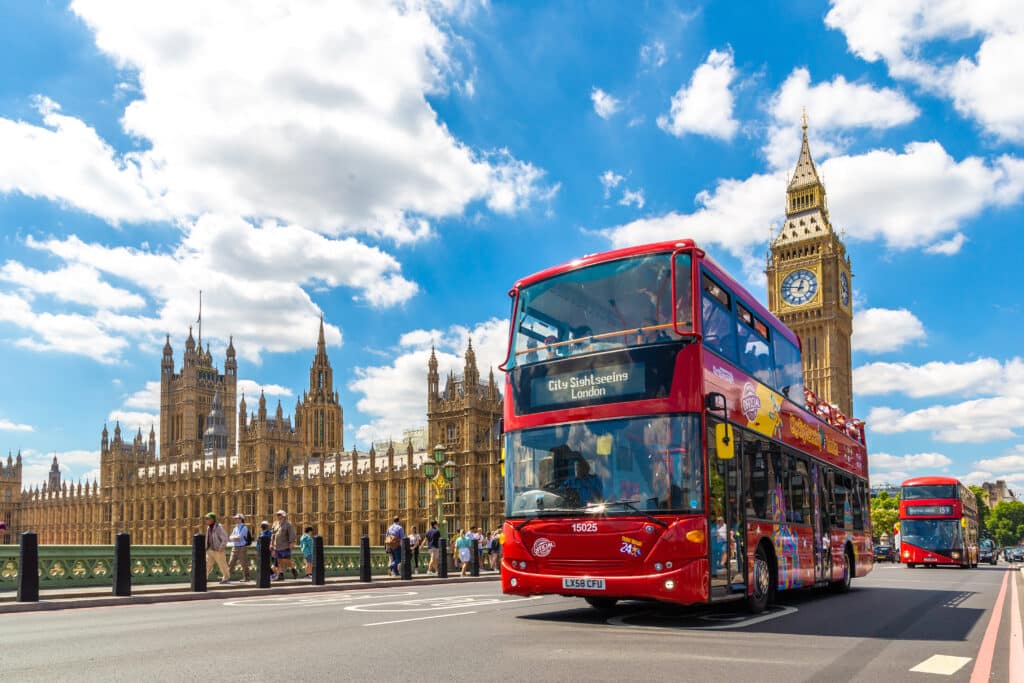
Summary
Throughout this article, I’ve covered quite a bit of ground. Let’s recap!
- Oyster cards are one of the cheapest and most reliable ways of paying for public transport in London. It’s characterized by its iconic blue design and is easy to use.
- The card comes in two versions with slightly different methods of acquisition.
- Visitor Oyster cards are bought online before your arrival in London.
- A regular Oyster card is typically purchased while in the city for £5 at e.g. a Tube station.
- With Oyster cards, you pay as you go. You also have to continually top up your card to pay for trips.
- You can use the Single fare finder by TfL to calculate the cost of any trip with public transport in the city.
- There are several alternatives to the Oyster card, such as contactless and mobile payments. However, some come with potential issues for foreign travellers using non-UK bank cards.
- With Travelcards, you pay for unlimited travel within a certain period of time.
- The daily pay as you go caps ensures you never pay more with an Oyster card, contactless card or mobile payments than what a Day Travelcard would’ve cost you.
- Travelcards can, however, result in great savings over a longer period of time. They can be added to a regular Oyster card or bought as physical paper tickets.
Conclusion
I would argue that out of all the options listed, the Oyster card seems to be the most straightforward and reliable payment method for public transport in London. It’s easy to acquire, flexible to use, and saves you a lot of potential trouble if you’re a foreign traveller. Furthermore, adding a Travelcard to an Oyster card is very easy and allows for savings if you plan on staying in the city for a while. If you’re only in London for less than a week, though – or you don’t plan on travelling a lot – I wouldn’t bother with a Travelcard.
So, there you have it. Please let me know if there’s something you think I missed or could’ve explained better! I’d love to hear your thoughts. Thank you for reading!

